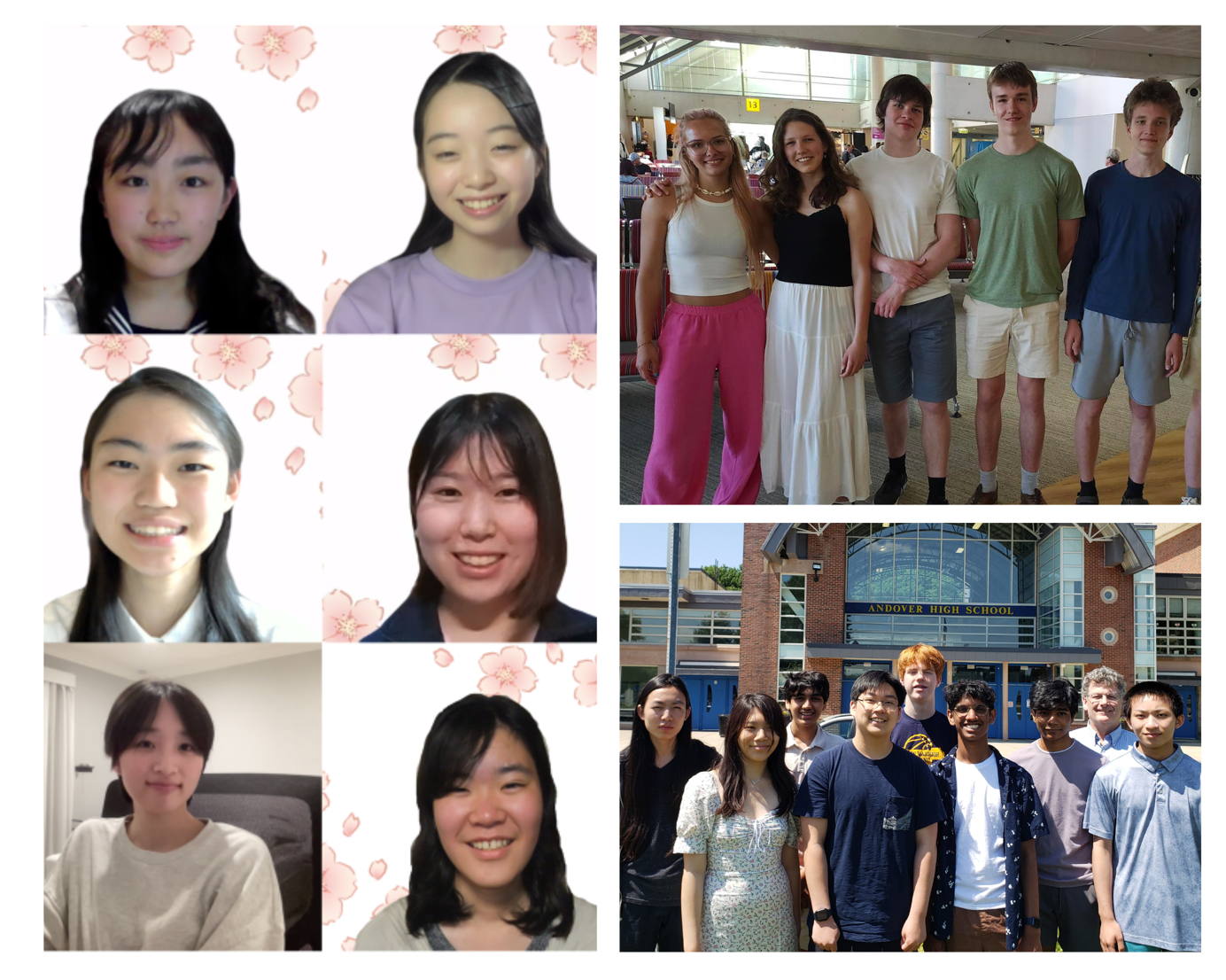Geneva and Hamburg, 25 June 2024. Beamline for Schools (BL4S) is a physics competition run by CERN, the European laboratory for particle physics, open to secondary school pupils from all around the world. Participants are invited to prepare a proposal for a physics experiment that can be undertaken at the beamline of a particle accelerator, either at CERN or at DESY (Deutsches Elektronen-Synchrotron in Hamburg, Germany). In 2024, three winning teams have been chosen, based on the scientific merit of their proposal and the communication merit of their video.
“Mavericks”, a team from the Secondary School of Sciences in Tallinn and the Hugo Treffner Gymnasium in Tartu, Estonia, and the team “Sakura Particles”, which brings together pupils from Kawawa Senior High School in Kanagawa, Joshigakuin Senior High School and Junten High School in Tokyo, Kawagoe Girls High School in Saitama and Kitano High School in Osaka, Japan, will travel to CERN in September 2024 to perform the experiments that they proposed. The team “SPEEDers” from Andover High School in Andover, USA, will carry out their experiment at a DESY beamline.
A beamline is a facility that provides high-energy fluxes of subatomic particles that can be used to conduct experiments in different fields, including fundamental physics, material science and medicine.
BL4S started in 2014 in the context of CERN’s 60th anniversary. Over the past 10 years, more than 20 000 pupils from all over the world have taken part in the competition, and 25 teams have been selected as winners. The participation rate has been rising consistently over the years, with a record 461 teams from 78 countries submitting an experiment proposal in 2024.
“Preparing a proposal for a particle physics experiment is a very challenging task. The success of Beamline for Schools shows that, when provided with the right support, high-school students can design feasible, interesting and imaginative experiments,” says Charlotte Warakaulle, CERN Director for International Relations. “We are continuously impressed by the quality of the proposals, and this year is no exception. The candidates demonstrated impressive creativity and great rigour, two essential qualities for students who might decide to take up scientific careers.”
The fruitful collaboration between CERN and DESY started in 2019 during a long shutdown period of the CERN accelerators. This is the sixth year that the German laboratory has hosted competition winners.
“Every year I am very impressed by the creativity and determination of the team members,” says Beate Heinemann, Director in charge of Particle Physics at DESY. “I am already looking forward to hosting the team from the USA this year. This programme is so important to me as it advances not only science but also the cultural exchange between young people from different nations.”
“Our experiment will focus on detector development for high-altitude ballooning applications,” says Saskia Põldmaa, one of the “Mavericks” members, from Estonia. “This is by far the biggest opportunity we have had so far in our lifetime so we will hold onto it dearly. We can’t wait to calibrate our homemade muon detector!”
“Our team focuses on detector development for muon tomography applications. We will test and optimise our homemade two-dimensional position-sensitive detector,” says Chiori Matsushita from the Japanese “Sakura Particles” team. “CERN has always been a dream for us. Finally getting to go there, not as a tourist but to do experiments, is amazing!”
“We focus on beam diagnostics: our aim is to measure and analyse the Smith-Purcell (SP) radiation emitted by different diffraction gratings when DESY’s electron or positron beams pass by,” says Niranjan Nair from the US “SPEEDers” team. “We are thrilled to have the opportunity to not just watch scientific advancement passively, but actively contribute to it at DESY: the ultimate goal of our experiment is to research SP radiation as a tool for beam diagnostics.”
The winning proposals were selected by a committee of CERN and DESY scientists from a shortlist of 49 particularly promising experiments. In addition, three teams will be recognised for the most creative video proposals and another 13 teams for the quality of physics outreach activities they are organising in their local communities, taking advantage of the knowledge gained by participating in BL4S.
Beamline for Schools is an education and outreach project funded by the CERN & Society Foundation’s donors. This 11th edition is supported notably by ROLEX through its Perpetual Planet Initiative and by the Wilhelm and Else Heraeus Foundation.
Further information:
- BL4S website: https://beamlineforschools.cern/
- 2024 edition: https://beamline-for-schools.web.cern.ch/2024-edition
- Shortlisted teams and special prizes in 2024: https://beamline-for-schools.web.cern.ch/sites/default/files/BL4S_all-winners_2024_final.pdf
- Previous winners: https://beamlineforschools.cern/resources/winners
- Countries represented among the shortlisted teams: Bahrain, Bangladesh, Belgium, Brazil, Canada, Chile, Czechia, Denmark, Estonia, France, Germany, Greece, Hong Kong SAR China, India, Indonesia, Italy, Japan, Kazakhstan, Pakistan, Poland, Romania, Singapore, Spain, Thailand, Türkiye, United Arab Emirates, United Kingdom, United States.
- The prizes awarded for the best outreach project have been kindly provided by the Belgian project “Stars Shine for Everyone”.

